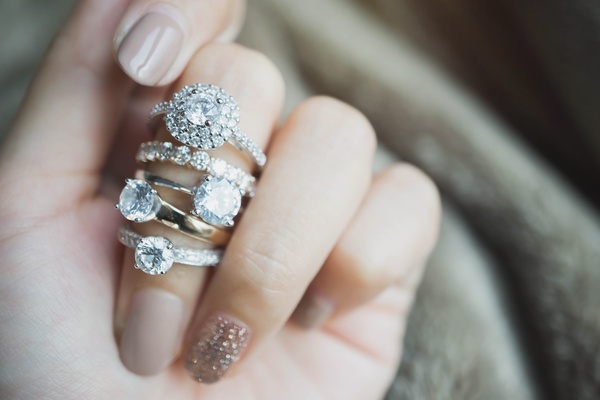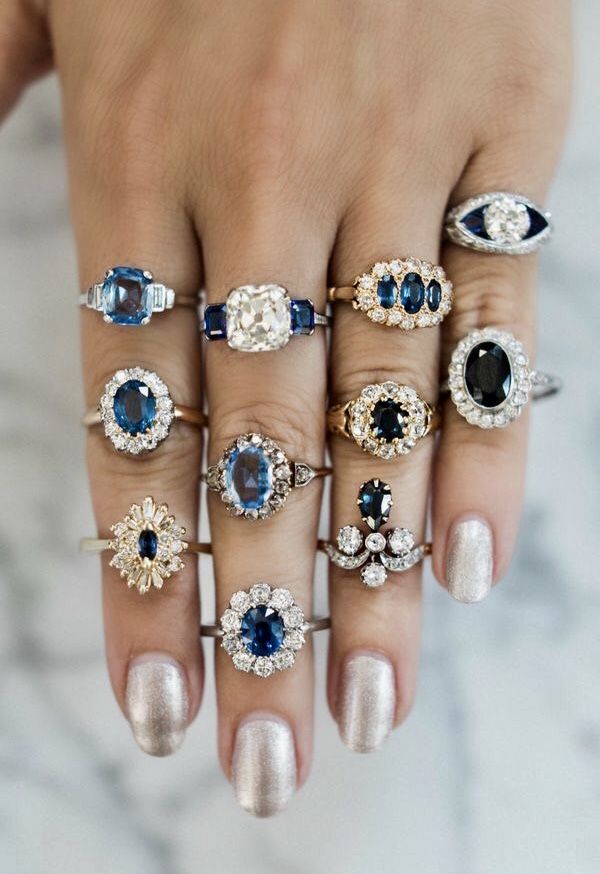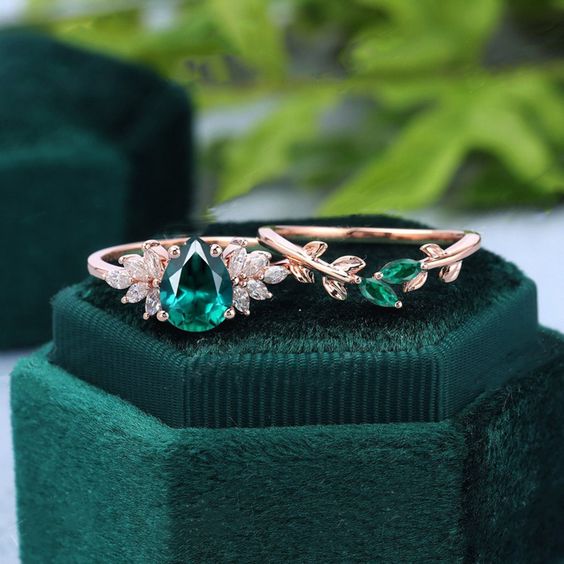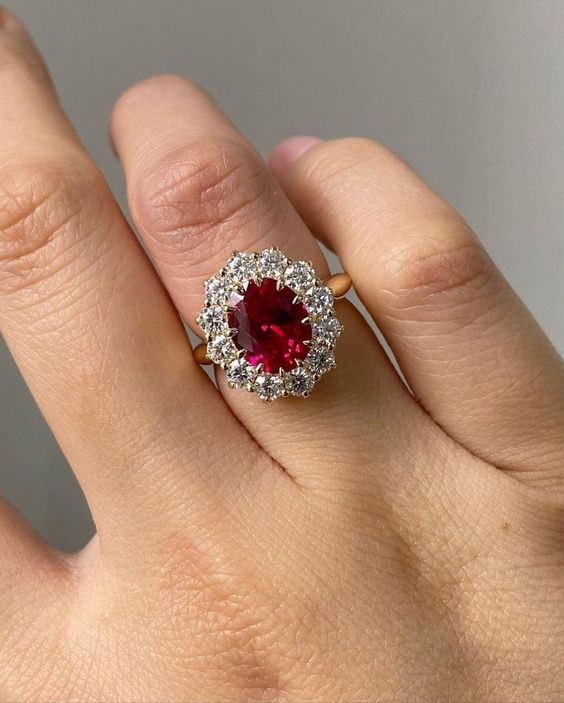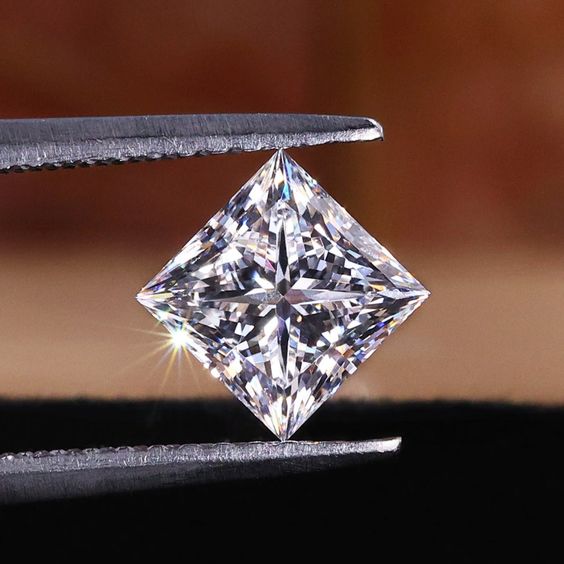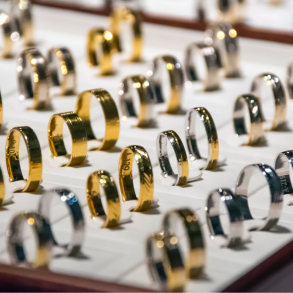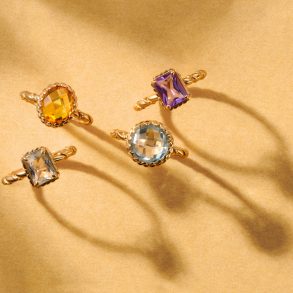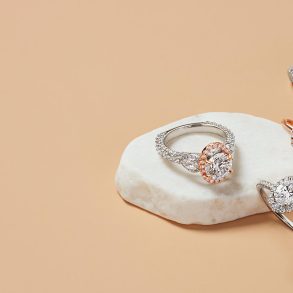Engagement rings are a symbol of the love and commitment shared between two people. But they don’t have to look like every other engagement ring you’ve seen lately. Your engagement ring can be as individual and unique as you are by choosing different colored gemstones that are just as precious as diamonds.
All precious gemstones are judged based on the 4 C’s: color, cut, clarity, and carat (weight).
We will feature 5 precious gemstone options for your engagement ring, one of which also happens to make a perfect option for couples who are looking for ethical jewelry.
Diamonds
Credit: Wedding Bee
Diamonds are a girl’s best friend for a reason. Diamonds are a classic gemstone option for engagement rings. They are composed of carbon and are the hardest naturally occurring material on Earth. That means they will never ever scratch, ensuring their longevity for more than a lifetime. Diamonds have ideal optical properties such as high dispersion and refraction which is what gives them that extra sparkle.
While traditionally colorless, diamonds actually come in many color varieties. Highly saturated, vividly colored diamonds are referred to as fancy diamonds and are much rarer and more valuable than colorless diamonds. These beautiful hues come from the presence of other trace minerals trapped inside the diamond such as manganese (pink), aluminum (blue), and graphite (black).
Sapphires
Credit: Pinterest
Typically thought of as blue, sapphires come in any color variation except red. Sapphires are composed of the mineral corundum and come in at a 9 on the hardness scale just after diamonds.
Sapphires and other colored gemstones are evaluated based on the purity of their color, with the most value related to the purest hue and most vivid color saturation. Sapphires can come in other colors such as green, violet, orange, and pink.
If you can’t pick just one beautiful sapphire color, you’re in luck, there is a variety of sapphires, called, particolored, sapphires that come in a 2-tone variety. What’s more, there are also ‘color changing’ sapphires that exhibit different colors in different lighting such as the traditional blue in outdoor light and purple under incandescent indoor light.
Emeralds
Credit: Pinterest
Emeralds are actually rarer and more expensive than diamonds. Emeralds are composed of the mineral beryl. The gorgeous green color comes from hints of chromium and vanadium. Emeralds rate 8/10 on the hardness scale. The richness of color and high transparency are what makes a top-notch emerald.
Emeralds are typically green but you can also find ones with more yellow tones or blue tones. Emeralds can be found worldwide, with the largest production coming from Columbia and Africa. Emeralds are known for having beautiful and unique inclusions (materials trapped inside the gemstone) that can give each emerald an individualized appearance.
Rubies
Credit: Pinterest
Rubies are composed of corundum. The stunning red color comes from traces of chromium. All other color varieties lighter than pink are referred to as sapphires. However, there is no official consensus on how to differentiate between rubies and sapphires beyond the color spectrum.
Traditionally, rubies are medium to dark red in color but can come in multiple color varieties including pink, purple, orange, and brown depending on their chromium and iron content. Rubies rate a 9/10 on the hardness scale. All over the world, rubies have been associated with love, passion, power, and protection. Rubies are some of the most expensive gemstones, with many large rubies more valuable than diamonds and more rare.
Rubies can contain beautiful and unique inclusions referred to as silk inclusions. These special intricacies appear like intersecting lines and can scatter light naturally brightening the gem’s appearance.
Lab-Grown Diamonds
Credit: Pinterest
Finally, if your heart is set on a diamond but there are reasons it may be out of reach, you should consider a lab-grown diamond engagement ring. Lab-grown diamonds are considerably more affordable than diamonds ranging from 30% to 50% more affordable.
Unlike diamond simulants like cubic zirconia and moissanite, which are completely different stones from diamonds, lab-grown diamonds are, chemically identical to natural diamonds, and are still graded the same way diamonds are (color, cut, clarity, and carat). To the everyday person, the difference between natural and lab-grown diamonds is imperceptible.


